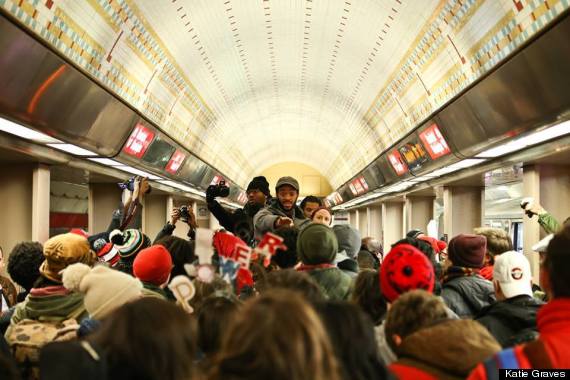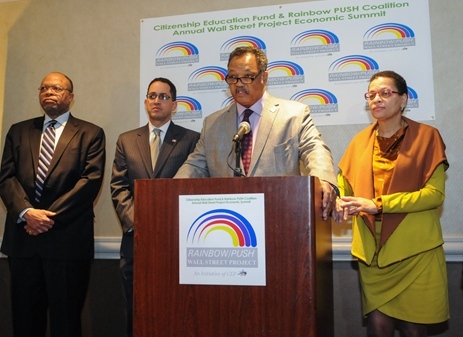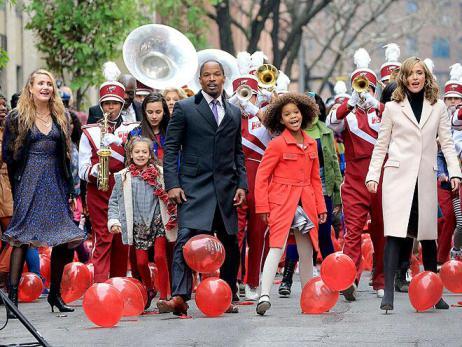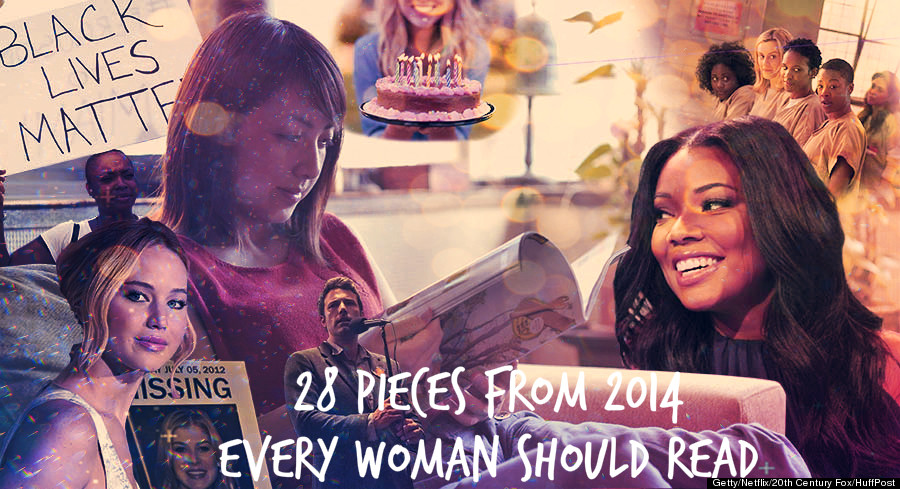In the social media age, sometimes it feels like the relevance of a single story lasts about as long as it takes to tweet about it. It can feel like a sensory overload, a near-constant “on to the next!” But once in a while you read a piece that seeps into your core, and sticks with you even months down the road. For the third year in a row, we’ve curated a list of pieces that stood out to us over the last calendar year. To make the list, an article had to be (1) published in 2014, (2) written by a woman and (3) be available online. (We also aimed to …
In the social media age, sometimes it feels like the relevance of a single story lasts about as long as it takes to tweet about it. It can feel like a sensory overload, a near-constant “on to the next!” But once in a while you read a piece that seeps into your core, and sticks with you even months down the road.
For the third year in a row, we’ve curated a list of pieces that stood out to us over the last calendar year. To make the list, an article had to be (1) published in 2014, (2) written by a woman and (3) be available online. (We also aimed to include a diversity of voices and publications, but we couldn’t bring ourselves to cut any of the three Roxane Gay pieces we ended up including. All hail the year of the Bad Feminist.)
Of course an end-of-year list can’t possibly encapsulate all of the incredible writing by and about women from 2014, but each piece we put on ours felt special in some way. The writing we ended up including moved us, informed us and made us think a little harder this year. We hope you’ll read through, and be inspired to do the same.
“Jennifer Lawrence And The History Of Cool Girls”
Anne Helen Petersen, BuzzFeed
Gillian Flynn may have been the one to coin the term Cool Girl — capital C, capital G — but Petersen was the first to pull Flynn’s meta-commentary out of Gone Girl‘s universe and (oh-so-eloquently) point out just how relevant it is to ours. “It’s the way our society implicitly instructs young women on how to be awesome,” writes Petersen. “Be chill and don’t be a downer, act like a dude but look like a supermodel.” Jennifer Lawrence’s public persona may be the latest iteration of unattainable Cool Girl, but there has perhaps always been a Cool Girl looming large, reminding us just how narrow — and treacherous — the path is to becoming her.
“I Don’t Care If You Like It”
Rebecca Traister, The New Republic
It might seem like a stretch to connect an absurd Esquire piece, a John Legend song, Amy Poehler, the story of South Carolina mother Debra Harrell’s arrest and Hillary Clinton’s bitchy resting face, but Traister does just that — and does it damn well. The end product is a masterful analysis of why gender-based power inequalities still matter in the United States, despite the surface-level progress we’ve made. “I wish it were different,” Traister writes. “I wish that every woman whose actions and worth are parsed and restricted, congratulated and condemned in this country might just once get to wheel around … and go black in the eyes and say, ‘I don’t fucking care if you like it.'”
“Our Stories”
Roxane Gay, The Toast
In an incredibly searing piece, Gay ruminates on rape and sexual assault narratives, and what women who talk about their past traumas open themselves up to. “I believe in the importance of sharing histories of violence. I am reticent to share my own history of violence,” she wrote — and then shared that harrowing history anyway. Gay explicitly states in the essay that she doesn’t want “pity or appreciation or advice” for telling her story. What we can offer her in return for this testimony is respect.
“My Nude Photos Were Stolen, And I’m Fighting Back”
Gabrielle Union, Cosmopolitan
After Union’s private photographs were stolen in a hack targeting female celebrities, the actress wrote an essay for Cosmopolitan about how the hack changed her life — and compelled her to speak out. She explained in no uncertain terms that the stolen images weren’t a “career boost” or a publicity stunt, but a form of abuse: “When billions of people on the Internet can see you naked without your consent, it’s a crime.”
“My Year As An Abortion Doula”
Alex Ronan, New York Magazine
Ronan, who supports women undergoing abortions through the Doula Project, shares some of her experiences from the past year. Her detailed account beautifully humanizes the fight for reproductive rights, and the women who exercise their right to choose. Namely, she writes, “The reality of abortion isn’t as tidy as the divide surrounding it.”
“My Feminist Awakening & The Influence Of Beyoncé’s Pop Culture Declaration”
Janet Mock, JanetMock.com
“On that VMAs Sunday, I watched Beyoncé journey from Destiny’s Child to solo star, from Single Lady to wife and mother, from Independent Woman to feminist cultural icon,” Mock writes. If you don’t think it matters when celebrities publicly embrace feminism, read this piece and allow yourself to reconsider.
“Why I Spoke Out About One Rape And Stayed Silent About Another”
Susan J. Brison, Time
“One was the best kind of rape, as far as my credibility as a victim was concerned. The other was the worst.” Brison’s incredible essay on why she reported being beaten and raped by a stranger, but stayed silent when someone she knew raped her, explains why it’s so hard for many women to come forward after they have been attacked. “Those who have been raped know that if they speak out, they will be blamed for not doing whatever it is people imagine would have prevented they from being raped,” Brison writes. Her essay is a reminder that the best thing we can do for survivors of sexual assault is believe them.
“Nobody Wants To Be The Girl On A Diet”
Lauren Bans, New York Magazine
Bans outlines a deeply uncomfortable truth: We want women to be conventionally beautiful and thin, but there are few labels more undesirable than “the girl who watches what she eats.” And unless you are a Kate Upton-in-a-Carl’s-Jr-commercial unicorn, Bans points out that it’s impossible to win. “Rather, we choose,” she writes. “If dropping 15 pounds means canceling all future dinner dates, developing fake sudden-onset allergies to alcohol and gluten, and buying a food scale, I choose 15 pounds.”
“Why Women Aren’t Welcome On The Internet”
Amanda Hess, Pacific Standard
Facing the constant threat of online harassment is something that any woman who writes words on the Internet understands all too well. But no one articulated quite how complicated it is to define, contain and police those threats until Hess did.
“While Writing For ‘Orange Is The New Black’ I Realized I Am Gay”
Lauren Morelli, Mic
While millions of viewers connected to the characters on Netflix’s hit “Orange Is The New Black,” for Morelli, making them come alive on paper created a shift in her own self-understanding. “In Piper and Alex, I’d found a mouthpiece for my own desires and a glimmer of what my future could look like,” she writes. Her honest reflection on the messiness of female sexuality — and the possibility of rediscovering yourself even when you’re sure you’ve settled down — is both touching and deeply important.
“What Ferguson Means For Black Women”
Chaedria Labouvier, Elle
“It is these facts and this history that black women have to face when rearing our boys,” writes Labouvier. “They can be killed, at any time and we are not to expect justice.” Read those two sentences again. Then read Labouvier’s entire gut-wrenching essay. Then get off your couch and do something about it.
“Why Didn’t You Just Leave?”
Melissa Jeltsen, HuffPost Women
“Why didn’t you just leave?” is an ignorant question that gets thrown at many survivors of intimate partner violence. Jeltsen helped six women use their own voices to explain exactly why it’s never that simple. We recommend reading (and listening) to all six stories. Each stands on its own, but together, they paint an even more powerful picture.
“The Power Of 29: An Ode To Being Almost 30”
Ann Friedman, New York Magazine
“It was around age 29 that the number of fucks I gave about other people’s opinions dipped to critically low levels.” Friedman’s words are sure to help women of any age give a few less fucks.
“I’m Having An Abortion This Weekend”
Jenny Kutner, Salon
We had read stories from women reflecting on their abortions weeks, months and years later. But Kutner articulates the mish-mash of emotions that a woman might face before undergoing the procedure, even when she is beyond sure of her decision. “I don’t know what comes next, how or if this will change who I am,” Kutner writes. “Maybe it will, maybe it won’t. I can’t know that now. It isn’t Saturday yet.”
“The Marriage Plot”
Roxane Gay, New York Times
Leave it to Gay to take a topic as seemingly unimportant as “The Bachelor” franchise, and make a point so beautiful and compelling that we had to include this essay on our list. She perfectly underscores why so many women (and men) find themselves tuning into the dating reality series week after week despite their better judgment: We are ultimately hopeful creatures who want to find love. “The real shame of ‘The Bachelor’ and ‘The Bachelorette,’ of the absurd theater of romantic comedies, of the sweeping passion of romance novels, is that they know where we are most tender, and they aim right for that place,” writes Gay. Amen.
“I’m 41, Single And Pregnant. Welcome To The New Normal”
Rachel Sklar, The Li.st on Medium
“I know how it looks: at 41, single and pregnant, I’m a sad, lonely outlier,” writes Sklar. “But it’s 2014. I’m not.” Sklar perfectly reminds us that the old adage “first comes love, then comes marriage, then comes the baby in the baby carriage” has never been more obsolete.
“Find Your Beach”
Zadie Smith, The New York Review Of Books
If you’ve ever lived in Manhattan, been to Manhattan or dreamed of Manhattan, Smith’s gorgeous essay is a must-read. Taylor Swift may have welcomed us all to New York this year, but Smith manages to distill the true beauty and pain of the city that never sleeps.
“Bill Cosby Drugged Me. This Is My Story.”
Beverly Johnson, Vanity Fair
2014 was the year when Bill Cosby stopped being able to ignore the many women who claim he drugged and assaulted them. There were more than 15 brave women who came forward to share their stories in the last few months, but Johnson’s first-person account in Vanity Fair was particularly chilling. She describes an encounter with Cosby where she claims to have been drugged by the comedian in the 1980s, narrowly escaping assault by yelling, “You are a motherfucker aren’t you?,” at him. She also outlines why she stayed silent for years (his power, the fact that he was a well-respected man of color in a world that rarely respects men of color), and why she finally decided to speak up: “I couldn’t sit back and watch the other women be vilified and shamed for something I knew was true.”
“No, I Will Not Take the Men’s Rights Movement Seriously”
Lindy West, Jezebel
Engaging with those who disagree with you can be an incredibly productive endeavor, but when those people are often intellectually dishonest and hateful, sometimes it’s best to just say “no.” West’s clear-headed rebuttal to MRA bullshit is exactly what we needed this year. “We still have a long way to go, especially in the widespread thinking about masculinity and gender roles (again, a feminist issue!),” writes West, “but drenching this conversation in misogynist hate is nothing but a hindrance and a masturbatory distraction.” Preach.
“Thick. Fat. Good.”
Nichole Perkins, The Toast
We can easily spend our lives yearning to be thicker or thinner or better, shutting our best qualities away from the world for fear of rejection. Perkins’ heart-wrenching piece explores the feeling of being constantly at war with your body — and what happens when you decide to declare a détente. “Now I look at myself in the mirror, hoping that if I had three wishes, I would use them to keep the voices out of my head that tell me I’m not enough,” writes Perkins.
“Marriage Is an Abduction”
Elif Batuman, The New Yorker
There were many excellent thinkpieces written about Gillian Flynn’s gripping thriller Gone Girl and David Fincher’s film adaptation, but Batuman’s is the smartest we’ve seen. Batuman reads Flynn’s story as dark cultural commentary on the deeply flawed institution of heterosexual marriage, one that casts wives as “people who disappear,” and creates expectations that hurt both the men and women who cannot live up to them.
“Abortion: Not Easy, Not Sorry”
Laurie Abraham, Elle
“I want to tell a different story, the more common yet strangely hidden one, which is that I don’t feel guilty and tortured about my abortion,” writes Abraham. “Or rather, my abortions. There, I said it.” This one’s a long read, but well worth it.
“What Happened When We Gave Our Daughter My Last Name”
Molly Caro May, The Hairpin
When May and her husband decided that their daughter would take her last name instead of his, they didn’t expect the “shockwave” of reactions they would receive from their supposedly open-minded communities. This confirmed to May that, “Surnames are one of the unseen limbs of the old world. Giving a child the father’s last name is still a given. And that given preserves the man’s place of power, from the Supreme Court on down to the everyday Joe.”
“If, Like Renee Zellweger, You’re Female And Have A Face And Body, Listen Up”
Jennifer Weiner, New York Times
“What would happen if more women — famous and unfamous — eschewed liposuction, shunned tanning beds and swapped the occasional run on the treadmill for a march on City Hall?,” asks Weiner, hitting back at those people who ridicule women just for existing in bodies that age. “The world might split open even more deeply — and that could be a beautiful thing.”
“Extra Straight Talk For Single Ladies On Valentine’s Day”
Alexandra Petri, Washington Post
Single women of America, this is the real, cold, hard truth you’ve been needing to hear all these years. Eat your heart out, Susan Patton.
“I Have Feared White Men And I Have Loved Them”
Roxane Gay, New Statesman
“I have known white men.” With this definitive statement, Gay opens one of the most powerful essays about race, love and the intersection between the two, that we’ve ever read. A deep understanding of the danger that institutional racism poses to people of color does not preclude Gay’s ability to love white men, and fear them, and love them some more. Reflecting on her most recent love, Gay writes: “He would show me how he loved my skin, how he loved me as more than my skin. He showed me how to love him as more than his skin.”
“Getting To No”
Susan Dominus, New York Times
Consent should not be complicated. But as Dominus outlines, using her own story of sexual assault during college, some women (and men) struggle to find the right words to articulate their discomfort with a sexual situation. Dominus’ story is one of textbook sexual assault — she said no, he didn’t listen — but she still makes a compelling case that we need to expand our vocabulary for the benefit of everyone. “I never felt I was a victim,” she writes. “Looking back, I was an English major for whom language failed at a moment when I needed it most.”
“Sisters, Ranked”
Jazmine Hughes, The Hairpin
“I’ll admit it: 2014 is the first year I ever truly loved my sisters,” writes Hughes. There are few relationships more complicated, fraught and beautiful than those between siblings. It is not always easy to love, or even like your siblings, but when you do, it’s like nothing else.















































